Imagine this! You are finally pumped with caffeine and settled in your chair for work, but your mouse and phone need charging. Your charging cable is missing in the clutter, and the power strip is away from sight. Sounds familiar? If you are in a similar mess, this guide is for you.
Keeping your office or home well organized is vital to maintaining a clear mind and focusing energy on productive actions. Therefore, investing in cable and accessory management becomes a one-time investment that continuously rewards you with a clear mind and streamlined productivity.
Gadgets like smartphones, earbuds, smartwatches, etc, all require specific equipment and relevant cables for charging and connectivity. Unfortunately, all these cables can easily get tangled inside a bag or on a table. Therefore, we need innovative, simple, and manageable solutions to ensure clutter-free and systematic cable organization. It can involve cable ties, docking stations, hubs, adapters, and other products. This guide will solve all your cable handling problems with a simple, easy-to-follow guide.
Table of content
Do You Really Need to Organize Your Cables?
According to a survey by Staples, 70% of employees believe that clutter in their workspace negatively impacts their productivity. Taking steps to remove table clutter, especially loads of cables and accessories, can help your performance at work. A National Association of Professional Organizers survey found that 80% of respondents reported feeling calmer and more relaxed after decluttering their homes. This study serves as further evidence for the inherent human desire for orderliness.
Now that statistics support our effort to organize cables, let's start decluttering!
Identify Devices and Cables
The first step is to identify your devices and their corresponding cables. There will be charging, data, power, video, audio, and ethernet cables around your working table, gaming setup, or home gadget space.
1.Identify Types: Observe the connectors of each cable to identify their types.
2.Categorize: Segregate the cables based on their type, identify their path, and observe each cable's length. We may need to wrap some cable length and fasten them with cable ties later.
3.Video Cables: DisplayPort, HDMI, VGA, DVI-D, or RCA are all video cables. They will run to a specific display device.

4.Data Cables: Usually, USB-A, USB-C, MicroUSB, Lightning, or Thunderbolt are available for data transfer.
5.Charging Cables: Charging and data cables are primarily similar. They can be USB, Lightning, or Thunderbolt.
6.Audio Cables: Dedicated audio cables can be 3.5mm, RCA, or XLR. Users use them to connect devices like headphones, speakers, microphones, or audio-related equipment.

Estimate Available Space and Prioritize Devices Based on Usage
After we have all the cables figured out, the next step is identifying all the devices, their space requirement, and possible fixed space for charging and placement.
1.Storage Area: Find your potential charging station or storage area. It can be the corner of your working table, drawer, or shelf.
2.Device Dimensions: Grab your measuring tape! We need each gadget's dimensions to determine whether horizontal placement or vertical stacking is possible.
3.Usage Frequency: Prioritize charging space based on frequency of usage. A smartphone charging can be more frequent than a smartwatch.
4.Charging Time: Based on fast and long charging needs, determine device accessibility needs.
Determine Which Cables Can be Kept, Discarded, or Replaced
There may be instances where you find multiple cables of the same type lying around. It's necessary to determine which extras to discard or replace. Here are the steps you can take to reduce the number of cables:
1.Chargers: Having more than one charger connected to your power strip can lead to more cables. There are some methods through which users can reduce the number of chargers. We will mention them in the upcoming sections.
2.Duplicate Cables: Remove all the identical cables, either donate them or place them somewhere away from sight.
3.Past Gadgets: Some cables might be unknown or compatible with older devices. For example, a micro USB cable may be obsolete for all your devices, so it's best to discard or send it for recycling.
Cable Organization Tips and Tools
Thanks to E-commerce websites! Finding the proper DIY cable management solution has never been more accessible. We have some tips and tools to help you start organizing the cable mess:
Cable Sleeves
If you have multiple charging cables running from the power strip to your favorite charging space for gadgets, utilize a cable sleeve. There are many types of cable sleeves. Spirals, braided sleeves, shrink tubes, or aluminum have pros and cons.
- Spiral: They are ideal if you want frequent access to cable or may require some cables replaced shortly. Cables inside spiral sleeves are more accessible.
- Braided Sleeves: Aesthetically, braided sleeves are the best. They blend in with the environment and can house multiple cables easily. Replacing cable in a braided sleeve is also accessible.
- Shrink Tubes: These are made for a firm grip and may require a hot gun to shrink them. Shrink tubes are the best if you want your cables to stick together firmly into a compact space.
- Aluminum: Aluminum sleeves are the best if you require magnetic interference or advanced features like durability and reliability. They are expensive and used in harsh environments.
Wall Clips
If the power cable of your power strip is loose, you can route it neatly along the wall using clips. All you will need is a hammer and proper size clips. Determine the size of your cable that you need to run around the wall and purchase relevant clips. Simply place the cable within the clip and hammer the nail on the clip to hold the cable.
Cable Organizers
While every product that tidies up cables is part of cable organizers, there are some dedicated products for organizing cables that prioritize aesthetics:
- Adhesive Cable Clips: These are the most popular type of cable organizes in modern workplaces and homes. They prevent cables from slipping off the table's surface, or users can place them underneath or on the side of their table for easy access to all their cables. They are inexpensive and provide neat aesthetics.
- Cable Ties: These can be plastic, velcro strips, or wire-based. All of them have a straightforward purpose to tie cables together. Users can hold cables at specific distances to make them look neat.
- Wire Management Trays: If cables are routing over your desk or floor, simply mount a wire tray under your table. Route all your cables inside the tray away from sight.
Charging Stations and Devices
There are loads of charging devices that homogenize the way we charge devices. A single charger can charge up to 4 devices simultaneously. Here are some of the popular products:
- Cable Management Boxes: These boxes can act like charging stations. They are aesthetically pleasing and can house a power strip, chargers, and cables within a small enclosure.
- Chargers: Some chargers support more than one device charging with multiple port interfaces. These are ideal for reducing the number of chargers connected to the power, consequently reducing the number of cables.
Cable Labeling System
Building a practical labeling system is ideal for users with different types of cables routing along their workspace or home. Labeling cables makes them easier to identify, replace, or discard.
Walls and Furniture
Some homes have concealed cable systems and advanced power outlets to reduce the need for receptacles. Home designers smartly place them at locations where users may require them the most.
- Power Outlet: The latest charging and power device technology uses wall receptacles with standard USB-C charging ports. They reduce the need for connecting chargers in power outlets. Therefore, you can keep the travel charger in your bag.
- Wall: Houses using wood paneling can use the space behind them to run cables. It can keep the house looking neat. Aesthetic panels for just the work desk are also favorable for routing cables.
- Furniture: Utilizing trays and racks hidden underneath or behind furniture away from sight is an ideal way to keep the home or workplace looking neat.
Wireless Charging: A Cable-Free Alternative
Wireless charging is gaining momentum, and their products are becoming accessible. Smartphones, tablets, laptops, earbuds, and other gadgets include wireless charging capabilities for a clutter-free experience.
Wireless Charging and its Impact on Cable Organization
Having a clutter-free environment makes workplaces and homes well-organized. Wireless charging eliminates the need to manage multiple charging cables and chargers completely.
- Clean Table Tops: Wireless charging stations can handle multiple devices simultaneously. There is no need to plug and unplug the cable. Modern charging stations come with 3-in-1 capabilities, charging three devices simultaneously.
- Travel Friendly: Chargers that work wirelessly are usually foldable. Switching from large power bricks and tangled cables makes wireless charging compelling.
- Easy Access: Unlike wire chargers, wireless chargers are easy to access. They do not get tangled and keep other objects in the bag from getting damaged.
Wireless Charging Pros and Cons
The benefits of wireless charging are not just limited to storage and travel:
- Safety: Whether it's the device or the user, wireless charging protects them both. There is a lower chance of getting an electrical shock due to less contact with cables. The chances of tripping from wires or damaging the device are reduced drastically with wireless technology.
- Durability: The product usually lasts longer than power bricks because there is less plugging and unplugging.
- Smart Lifestyle: Whether it's your car, work desk, side table, or any other space where you are likely to place your gadgets, wireless charging pads can seamlessly charge devices.
Customizing Your Charging Setup
As the number of devices that need charging increases daily, the need for unique and innovative solutions is arising. To reduce the need for multiple charging stations and associated e-waste, manufacturers and government organizations have come up with the following solutions:
Standardization of Chargers
The rising e-waste associated with abandoned chargers and wires led to a regulatory push from the government to introduce a universal charging solution. Apple recently embraced the Type-C interface for some of its devices due to the market trend, user flexibility, and future-proofing. Here are some of our tips that can reduce cable clutter and help the environment with a Type C standard charger:
- USB-IF Certified Charger: Purchase a certified USB-IF USB-C charger applicable across various devices for standard voltage/ampere.
- Powerhouse for all Devices: A USB-C cable can provide 240W for various devices.
- Versatility of USB-C: A single USB-C can provide power, video/audio, and data transfer.
Use Cable Adapters

You finally got rid of all the chargers and have one universal charger for all your charging needs. But there is still a problem with different wires. Some devices charge with micro USB, while others use Type-C, USB-A, or Lightning port. That's why you need cable adapters. However, you will need to be careful when selecting an adapter:
- Socket and Plug: Ensure you have the correct socket and plug sides. Buy a Micro-USB male to USB-C female adapter to convert your USB-C connector to a MicroUSB.
- Quality: Always buy an adapter of high quality. Some devices draw a lot of power, which can damage your adapter.
Charging Hub and Docking Station
One of the best possible solutions for the mounting quantity of cables and tangling mess is using a docking station. Introducing versatile USB-C connectors has opened new horizons for designers and manufacturers. Here are the salient features of a docking station and their impact on cable management:
- Single Cable: A USB-C connection to a single port on a laptop or computer links the docking station with many connectivity options.
- Diversity: It provides various cable connections, including data, power, audio, video, and ethernet connectivity.
- Convenient Cable Management: These reduce the need to route multiple cables from the source, making cable management more accessible and convenient.
Building Your Charging Dock
Want to build your charging dock that is tailor-made to suit your needs? We have an excellent step-by-step guide to creating a personalized charging dock. Let's start!
1.Conceptualize Your Dock: Imagine the shape of the dock you desire. Take a look at the setup where you want it to blend in. Use the already-established algorithms to make sure your new device fits perfectly. Get to the drawing board and draw a sketch.
2.Finalize Your Requirements: Depending on your chosen methods, USB hubs, multi-port chargers, or wireless charging pads. Purchase the relevant devices and consider cable management solutions like sleeves or clips.
3.Plan Your Material and Tools: Do you want a wooden, plastic, metal, or cardboard-based charging dock? Ensure you have the necessary equipment according to your choice of material, like drills, saws, sandpapers, hot glue, and cutters.
4.Start Construction: After you finalize the design, the ports, charging hubs, and wireless charging pads. Start the cutting, drilling, fastening, tightening, and finishing process. Use adhesive like hot glue to keep the wires together inside the dock.
Here are some examples of custom charging setups for inspiration:
Example#1: Woodsy Haven

A woodsy haven for tech nomads. This handcrafted station cradles phones, AirPods, and Apple Watch in a well-organized manner. Say goodbye to cable chaos and hello to hybrid cable and Zen charging. Simply use a docking station and a hub to power all these devices simultaneously.
Example#2: Drawing Power

This repurposed drawer-turned-tech haven cleverly conceals a nest of gadgets. Phones rest inside the drawer, cords route through hidden channels, and a wireless pad makes charging place and forget. There is no more countertop clutter, just sleek, slide-open serenity. A simple charging hub or a multi-port charger is enough to power all your devices simultaneously. Install a charging pad underneath the drawer base for further ease.
Example#3: Wire Mesh Rack

This ingenious creation elevates a simple “metal wire mesh” wall rack to a multi-device charging station. Tablets find secure placement on their sturdy shelves, while headphones gracefully drape from designated hooks. A discreetly integrated charging hub eliminates cable clutter, fostering an environment of streamlined organization and efficient power management.
The Role of Cable Management in Smart Homes
From Tangles to Tech Symphony: Intelligently organizing your cables isn't just about how they look anymore. Wireless chargers power devices without any problems, and spring-loaded devices wind up loose cords gently. Smart plugs automatically turn off power to eliminate phantom drains, and sensors set off charging based on schedules or closeness. What's the result? A place without clutter where energy moves smoothly and fits in with your digital life.
Future Above and Beyond Wires: Wireless charging is the way of the future, but it's also unexpected. Imagine furniture with charging stations built into it, roads that charge electric cars as they drive, or fabrics woven with conductive threads. No more plugs! Heat, movement, ambient energy, and other sources are poised to revolutionize charging.
Conclusion
We can restate key strategies for organizing charging cables and accessories to summarize the complete guide.
- Use clips, cable ties, trays, organizers, furniture, and charging stations to tidy your workplace or home from wires.
- Opt for wireless charging as it is the way to the future. Explore after-market options for every personal device to enable their wireless charging capabilities.
- Use a certified, standardized, and versatile charger like the USB-C charger.
- Explore the options in charging hubs and docking stations for a cable-clutter-free environment.
- Use a cable adapter with a universal charger to utilize a single cable for all your charging needs.
- Build a DIY charging dock for maximum customization.
Besides these tips, always keep reviewing your cable management system. There are new products that can benefit your workplace and ensure a minimalist approach to aesthetics. Be amongst the 80% of people who decluttered their homes feeling calmer and more relaxed, according to the National Association of Professional Organizers. Taking control of your tech cables can have a similar effect, creating a sense of serenity in your work or living space.

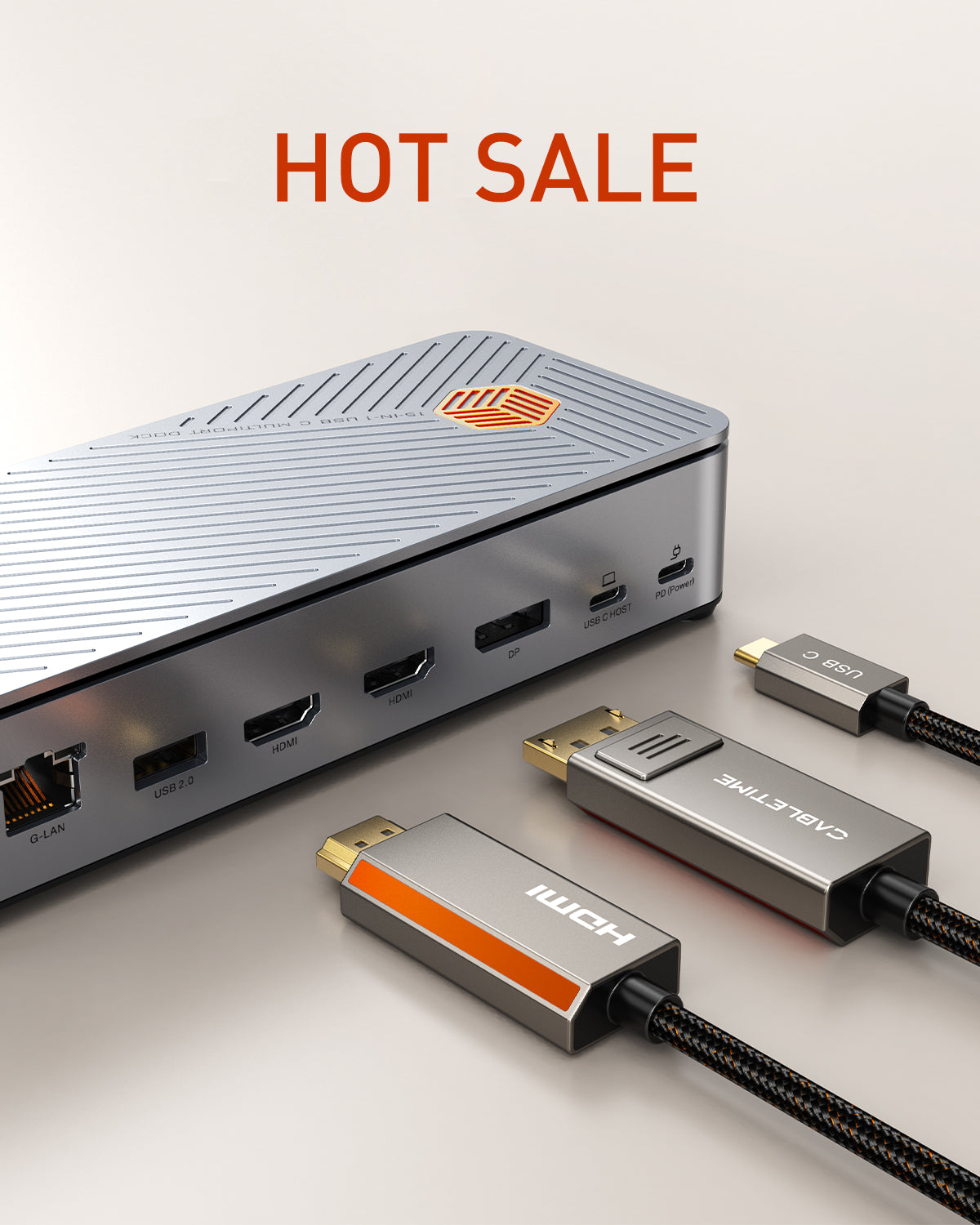
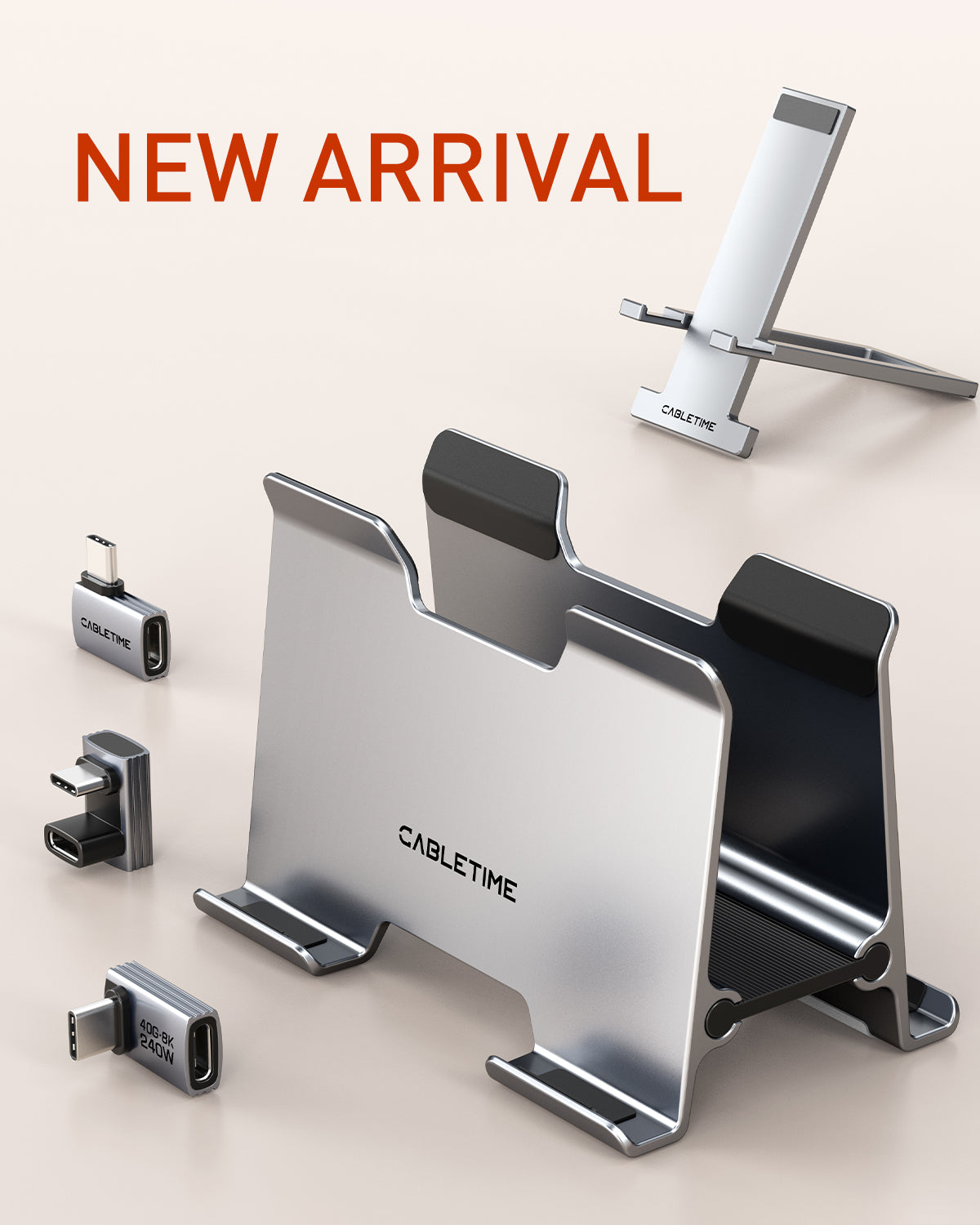
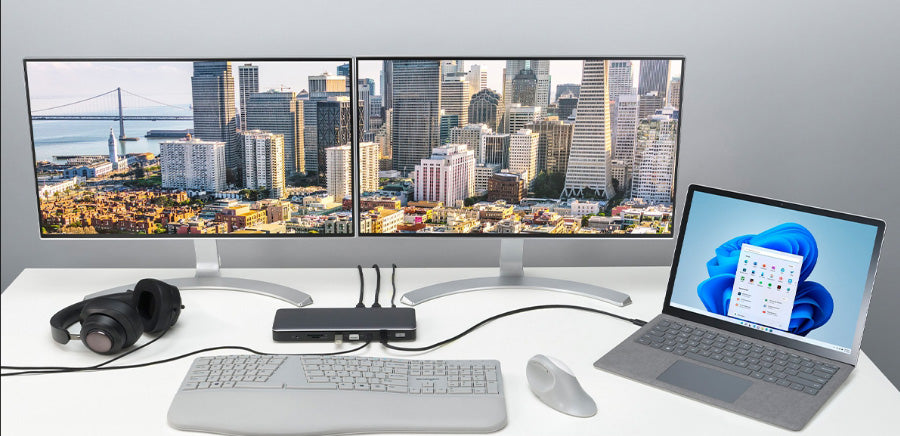
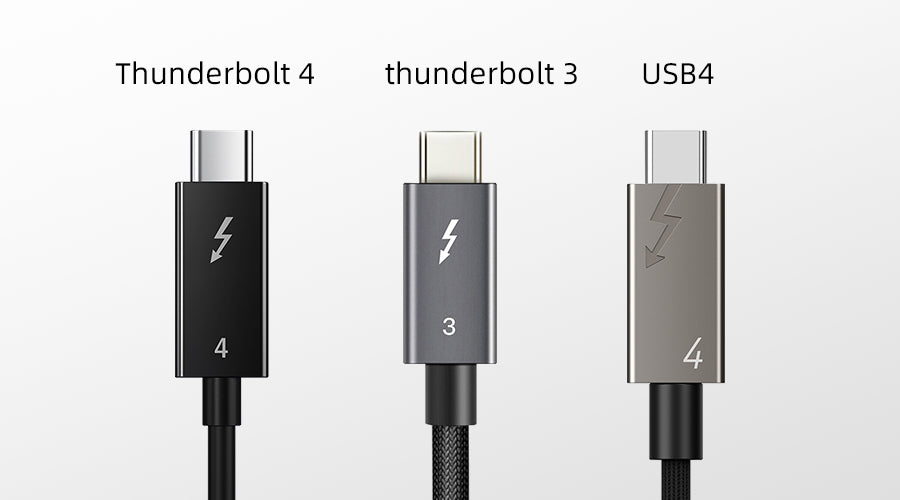
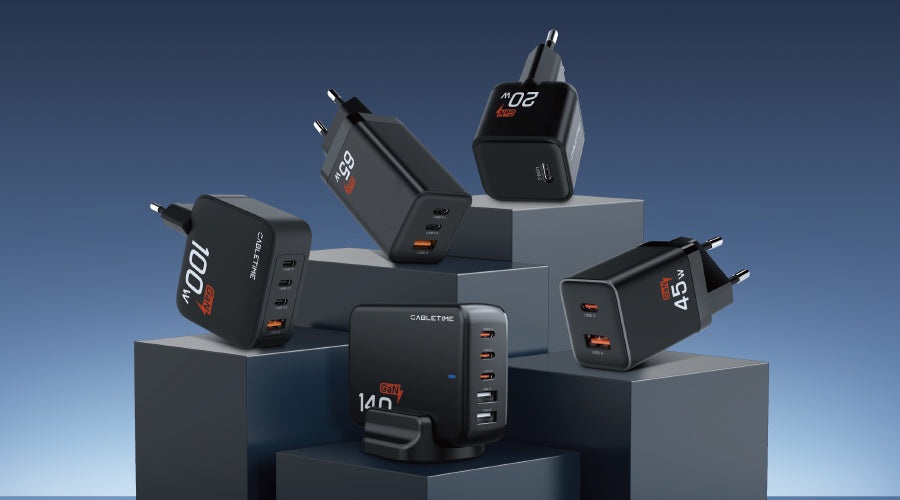
Leave a comment
This site is protected by hCaptcha and the hCaptcha Privacy Policy and Terms of Service apply.